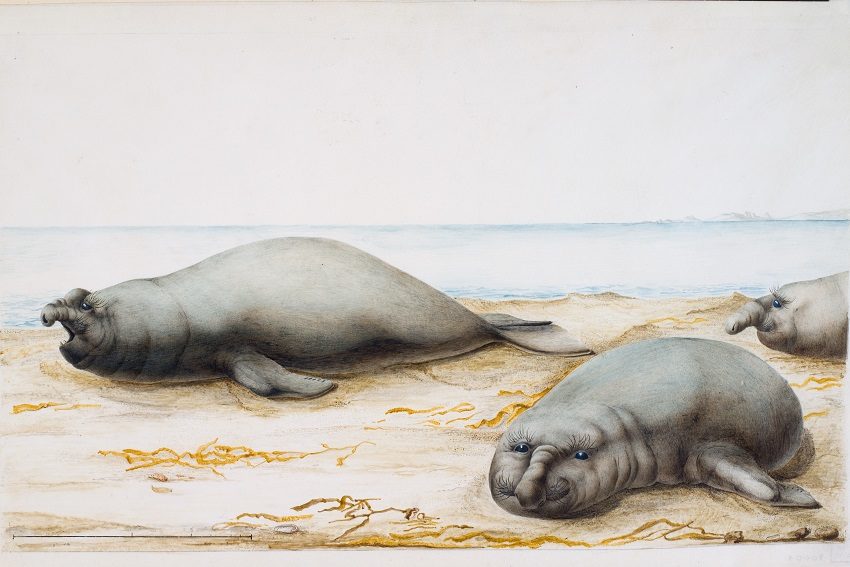Nicolas Baudin's Napoleonic Mission for Art and Science in South Australia

Showing in Australia for the first time are more than 340 of the original paintings and drawings from Nicolas Baudin’s expedition to Australia.
The Napoleon-funded voyage departed for Australia in 1800 with two ships Le Geographe and Le Naturaliste carrying 24 scientists and artists and five gardeners to research and study the new southern world.
Captained by Nicolas Baudin, he died in Mauritius on the journey home as did many of the crew. Baudin was written out of history by Francois Peron, who wrote the official account of the voyage. But, says, curator Lindl Lawton, the trip was an “incredible scientific success” and some of the scientific gold is on display at the South Australian Maritime Museum exhibition, The Art of Science: Baudin’s Voyagers 1800-1804.

“They brought back well in excess of 100,000 specimens and 2,500 were new to science,” Lawton says. “They brought back live specimens, a massive herbarium with many new specimens. They mapped portions of the South Australian coast that [Matthew] Flinders didn’t, which is why we have that smattering of French sounding names. It was an incredibly successful scientific expedition. They didn’t reach the southern coast first, as the authorities would have liked, but it was mainly a scientific expedition.”
The exhibition, which is on display at the Maritime Museum until December 11 before touring the rest of the country, shows more than 340 artworks and 50 paintings and drawings by the expedition’s artists Charles-Alexandre Lesueur and Nicolas-Martin Petit, as well as Baudin’s personal journal and coastal profiles and hand-drawn maps from French institutions that have never been on display in this country.

Despite the scientific success, Baudin is basically a “non-entity” in France, according to Lawton.
“The Maritime Museum in Paris – nothing on him, zero,” she says. “There’s stuff on Le Perouse and Bougainville but nothing on Baudin at all, to the point that his chronometer which we have on display in this exhibition, was clustered together with a couple of other chronometers, and the story was about this time piece and the evolution of chronometers. His name wasn’t even mentioned.”
There are many reasons why Baudin’s legacy has only been recognised recently.
“Half the scientists jumped shipped in Mauritius. They wanted to salvage their reputation, so they started writing letters to the authorities, publishing their own accounts of the first part of the voyage which maligned Baudin to salvage their own reputations. They made out that the captain wasn’t organised, it wasn’t a good voyage, it was doomed and a failure.

“You had Peron, who really clashed with Baudin; he was in charge of writing the official account of the voyage when they got back. He wrote Baudin out of history. He mentioned his name once in the two volume official account of the voyage. He disappeared from the record.”
South Australia is a reason why Baudin is now getting recognised as Christine Cornell was the first person to translate his journal to English in 1974 and the book Encountering Terra Australis by Peter Monteath and John West-Sooby tracked the lives and expeditions of Flinders and Baudin.

“They’re crucial to this material coming to light, they’re [Monteath and West-Sooby] often on French radio, talking about Baudin and educating the French about this explorer. What I think is going to happen from this exhibition is that it will probably raise the profile of Baudin in France, because those big institutions with fantastic Baudin collections are starting to realise that people are interested in them.”
The Art of Science: Baudin’s Voyagers 1800-1804
South Australian Maritime Museum
Until Sunday, December 11
maritime.history.sa.gov.au